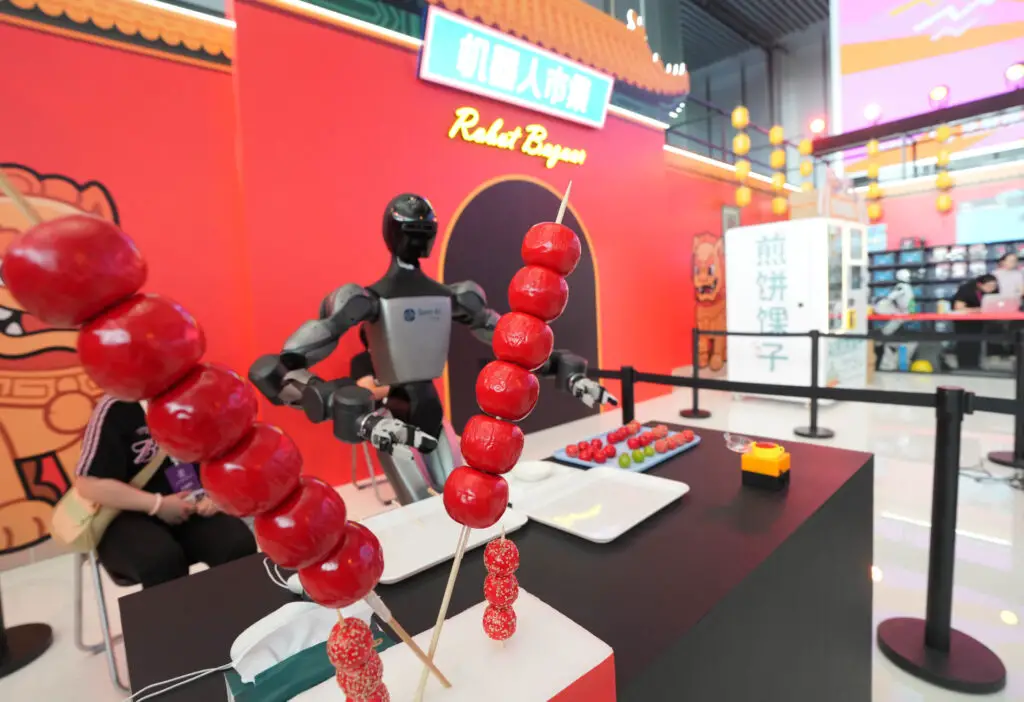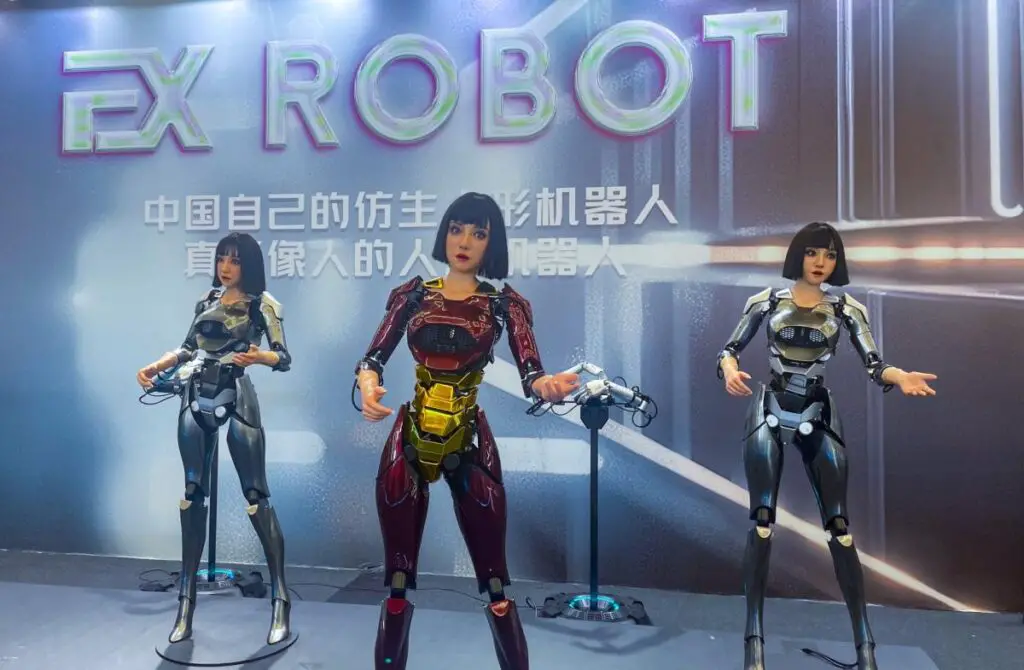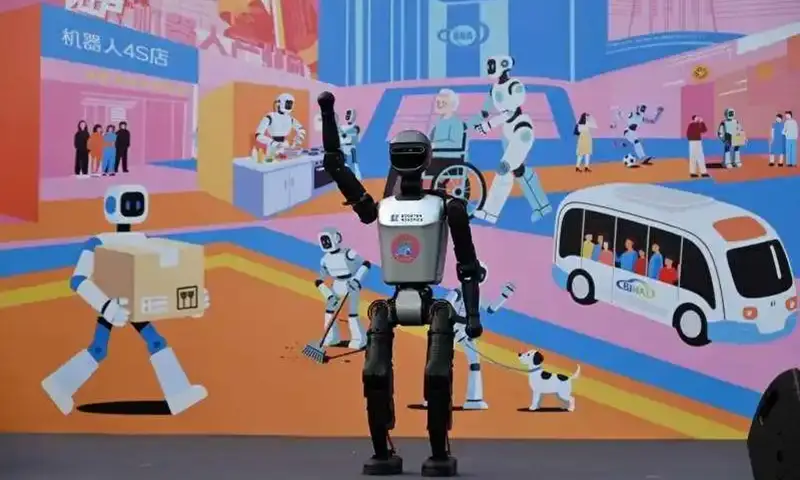In August 2025, Beijing hosted a historic event that is shaping the future of consumer technology the Robot Shopping Festival. Spanning from August 2 to 17, this festival marked the world’s first ever consumer focused event dedicated entirely to robots and intelligent devices.
The festival achieved astounding results, with more than 19,000 robots and related products sold, generating total sales exceeding 330 million yuan $46 million, and shipping 190,000 units across the country. This unprecedented response shows that China’s robotics industry is moving rapidly from innovation to mass-market adoption.
For years, robots were primarily seen in factories or research labs, performing repetitive tasks or assisting scientists in highly specialized roles. However, the Robot Shopping Festival demonstrated a significant shift in consumer perception.
Robots are no longer just industrial tools they are becoming companions, household assistants, and even entertainment devices. Take, for example, the Galbot G1 humanoid robot, which debuted at the festival.
Designed to assist in healthcare and home management, it can fetch medications, monitor vital signs, and even interact with users in natural conversations. This is a clear sign that technology is no longer intimidating it is now practical, functional, and integrated into daily life.
Zhong Xiangyun, a humanoid robot industry analyst, remarked, This festival highlights how quickly China is moving from technical breakthroughs to mass market applications. Consumers are now ready to embrace robotics as part of their lifestyle.

The Robot Mall
A standout feature of the festival was the introduction of the Robot Mall, a 4,000 square meter robot 4S store in Beijing’s high tech E-Town district. This mall was designed not just as a retail space, but as an interactive experience where consumers could explore, test, and purchase cutting edge robotic products.
From medical robots to AI powered kitchen assistants, the Robot Mall offered a diverse range of products. High end humanoid robots, capable of recognizing faces and responding to voice commands, drew particular attention.
Notably, 25% of the festival’s sales came from orders exceeding 1 million yuan, indicating strong interest from corporate buyers as well as individual consumers.
Wang Yifan, the store manager, shared her perspective Customers were fascinated by the robots’ capabilities. Many visitors spent hours interacting with the products before making purchases. This shows a growing curiosity and acceptance of AI in everyday life.
The festival’s success was significantly boosted by government intervention. Beijing E-Town introduced a 70 million yuan consumption voucher program, offering individual buyers discounts of up to 1,500 yuan ($211) and corporate buyers up to 250,000 yuan. This initiative alone contributed 700 million yuan in robot sales during the festival.
Government support played a critical role in transforming curiosity into tangible sales. By reducing the financial barrier to entry, these subsidies allowed more households and businesses to experience robotic technology firsthand.
Dr. Zhang Hao, chief scientist at ALVA Technology, explained, Financial incentives combined with education about robotics can rapidly accelerate consumer adoption. The festival proved this model works in practice.

E-Commerce and Social Media Amplify the Trend
Online platforms were central to the festival’s reach. JD.com, one of China’s largest e-commerce marketplaces, promoted over 680 robotic products from 63 brands, including quadruped robots, educational robots, and industrial automation devices.
Discounts of up to 600 yuan per product made robotics more accessible to a broad audience. The festival also generated viral buzz across social media. Platforms like Douyin, Kuaishou, and Sina Weibo recorded millions of views and interactions, with hashtags related to the festival trending nationwide.
Online mentions surpassed 500 million, demonstrating that interest in robotics extends far beyond traditional tech enthusiasts. Visitors to the Robot Mall described their experiences as both educational and thrilling.
One consumer, Li Mei, shared, I tried a humanoid robot that could play music, provide reminders, and even answer questions about my day. It felt like having a helpful companion at home.
Similarly, corporate buyers reported improved productivity and operational efficiency after integrating humanoid robots into offices and healthcare settings. These firsthand experiences suggest that robots are not just novelties they are practical tools that enhance everyday life.
The Robot Shopping Festival signals a turning point in consumer technology. The combination of government support, immersive retail experiences, and digital engagement has created a blueprint for introducing advanced technology to the mass market.
Mass Adoption of Humanoid Robots are transitioning from niche products to mainstream consumer goods. Beyond entertainment, robots are increasingly used for healthcare, education, and home management.

E-commerce and social media amplify awareness and facilitate direct sales. The robotics industry is poised to contribute significantly to domestic consumption growth.
Experts believe that as robots become more intelligent and affordable, their role in households and workplaces will continue to expand. By making technology tangible, interactive, and accessible, festivals like this accelerate adoption and reshape the market landscape.
The success of Beijing’s Robot Shopping Festival offers a glimpse into the future. By bridging the gap between cutting edge robotics and everyday consumers, the festival demonstrates that technology can be both exciting and practical.
It also shows how government initiatives, retail innovation, and digital engagement can work together to accelerate technological adoption. As China continues to innovate, events like this will play a pivotal role in familiarizin.
The public with intelligent systems and setting the stage for a society where robots are integral to daily life. The festival is not just a shopping event it is a cultural and technological milestone, marking the beginning of a new era in consumer robotics.

